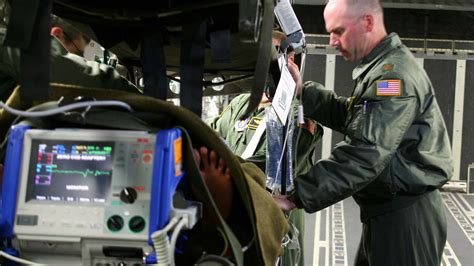Introduction
Aerospace medicine, a specialized branch of medicine, intersects the worlds of human biology, technology, and the vast expanse of space. Aerospace medicine residencies offer a unique opportunity for physicians to delve into this captivating field, preparing them to care for individuals operating in extreme environments both on Earth and beyond.

History and Scope of Aerospace Medicine
The roots of aerospace medicine can be traced back to the early days of aviation, when advancements in flight technology surpassed the human body’s natural limits. As humans ascended higher into the atmosphere, they encountered a series of physiological challenges, including hypoxia, decompression sickness, and radiation exposure.
Today, aerospace medicine encompasses a broad range of disciplines, including:
- Physiological Adaptation: Investigating how the human body responds to the unique stresses of space travel, including microgravity, isolation, and extreme temperatures.
- Medical Countermeasures: Developing strategies to mitigate the adverse effects of space travel on human health, such as medication, exercise programs, and protective gear.
- Environmental Control: Ensuring the health and well-being of astronauts by regulating spacecraft atmospheres, temperatures, and humidity levels.
- Emergency Medicine: Providing medical care in emergency situations during space missions, including trauma management and critical care.
The Aerospace Medicine Residency
Aerospace medicine residency programs typically span three years and are accredited by the Accreditation Council for Graduate Medical Education (ACGME). Applicants must have completed medical school and obtained a medical license.
The residency experience includes:
- Clinical Rotations: Training in internal medicine, emergency medicine, critical care, and other specialties relevant to aerospace medicine.
- Research: Conducting research projects that contribute to the field of aerospace medicine.
- Space Simulation Training: Experiencing mock space environments, such as parabolic flights and underwater simulated spacewalks, to prepare for the rigors of space travel.
- Flight Experience: Participating in actual space missions as a flight surgeon to provide medical care to astronauts during spaceflight.
Career Opportunities in Aerospace Medicine
Graduates of aerospace medicine residency programs can pursue a wide range of career opportunities, including:
- Flight Surgeon: Providing medical care to astronauts and cosmonauts during space missions.
- Medical Director: Overseeing the health and safety of space exploration programs.
- Research Scientist: Conducting research to advance the understanding of human adaptation to space travel.
- Educator: Teaching aerospace medicine to medical students, residents, and other healthcare professionals.
- Air Medical Physician: Providing medical care to patients transported by aircraft or helicopter.
Why Aerospace Medicine Matters
Aerospace medicine plays a critical role in ensuring the health and well-being of individuals operating in extreme environments. Its contributions extend beyond space exploration, benefiting individuals in a variety of settings, including:
- Commercial Aviation: Providing medical advice and support to pilots and passengers.
- Military Aviation: Developing and implementing medical policies and procedures for military pilots and aircrew.
- Extreme Sports: Collaborating with athletes to optimize performance and minimize risk in extreme environments.
- Undersea Exploration: Supporting medical operations for deep-sea diving and underwater research.
Benefits of Aerospace Medicine Residency
Participating in an aerospace medicine residency offers numerous benefits, including:
- Specialized Training: Acquiring in-depth knowledge and skills in aerospace medicine, preparing for a unique and fulfilling career.
- Career Advancement: Opening doors to a wide range of high-level positions in the aerospace industry and related fields.
- Unique Experiences: Gaining firsthand experience in the demanding and exhilarating world of human space exploration.
- Cutting-Edge Research: Contributing to the development of innovative medical technologies and practices that benefit both astronauts and individuals on Earth.
- Personal Growth: Embracing the challenges and rewards of working in a rapidly evolving field that pushes the boundaries of human health and technology.
Steps to a Successful Aerospace Medicine Residency
Aspiring aerospace medicine residents should consider the following steps to maximize their chances of success:
- Obtain a Strong Foundation: Excel in medical school and demonstrate a passion for aerospace medicine.
- Seek Research Experience: Engage in research projects related to human physiology in extreme environments.
- Network with Professionals: Attend conferences, workshops, and other events to connect with experts in the field.
- Apply Early: Start the residency application process early in the fourth year of medical school.
- Prepare for Interviews: Practice interviewing skills and be prepared to discuss your qualifications and motivations for pursuing aerospace medicine.
Conclusion
Aerospace medicine residency is a transformative experience that empowers physicians to care for individuals operating in the most challenging environments imaginable. By pushing the boundaries of human health and technology, aerospace medicine has the potential to revolutionize the way we approach healthcare both on Earth and beyond.
